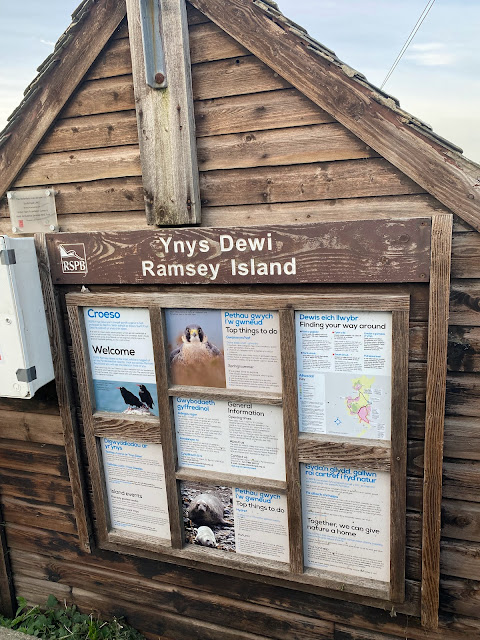I've been meaning to reprise this blog for a while, and it seems fitting to do it by documenting a sensational few days on the coast of South-west Wales in September 2023.
On my train back from a stint working in London on the evening of Wednesday 20th September, news was filtering through of Britain's second Magnolia Warbler, a spectacular American bird, which had been found on St Govan's Head in Pembrokeshire that afternoon. By the time I'd got back to Sheffield at 10.30pm I'd decided that an attempt had to be made to see this bird. These types of American warbler have largely only previously been seen on the extremities of the UK in the Isles of Scilly, Shetland or the Hebrides. It was unusual to find one on the mainland, so while it was a long way, it seemed a great opportunity to try to connect with this rarity. As the Magnolia Warbler had, later in the evening, been reported as appearing to go to roost at the same site, there was a good chance of locating it again the next morning at dawn. Once home, a quick shower and gathering of birding gear and I was driving down to South Wales just after midnight.
The plan was to arrive in the early hours and get an hours sleep before heading out at daybreak. It was a clear night during the drive south which was worrying - would the warbler carry on migrating? When I got to the car park at around 4.30am, there already around 60 cars present, and others arriving all the time! People were out in the dark chatting away, so there was no chance of sleep.
With the faintest sign of daylight, around 200 birders descended into the small valley to the south of the car park. Everyone took a place on the slope opposite the site it had been appeared to go to roost.
Within minutes someone behind me had located a bird with a thermal image camera, it was sat preening in the dark. As more light emerged, a nearby telescope was on the bird and within minutes bright yellow tones could be seen through the gloom - it was almost certainly the Magnolia Warbler. The bird was confirmed shortly afterwards as it showed regularly up and down the north side of the valley in the early morning sun. After an hour or so it moved to a location nearer the car park, where it stayed most of the day until relocating a few hundred metres further north, an area it then stayed in for several days.
This was a superb bird to see, but during the morning it became evident this individual was part of an unusual influx of North American passerines, probably never seen before in terms of the actual volume of birds being found within a few days. Over the next few hours, news soon emerged of other North American birds being unearthed: a Bay-breasted Warbler on nearby Ramsey Island (for only the second time in the UK), an Alder Flycatcher on Skokholm, and a Black and White Warbler in North Wales, all extreme rarities.
As the other birds seemed inaccessible due to weather conditions stopping any organisation of boats to the various islands, I drove back to Sheffield content with such a great morning in South Wales.
I managed a normal nights sleep and worked the following day on Friday. Things soon changed though when I received a call from a fellow Sheffield birder who had somehow managed to get hold of three tickets on one of only four boats going to Ramsey Island the next day on the Saturday for the Bay-breasted Warbler. This seemed like an opportunity not to be missed. After rearranging weekend plans I was back in a car heading overnight for South Wales again with Roy and Malcolm! For the second time in a week Malcolm had abandoned his family holiday on the Yorkshire coast to head to South Wales.
We arrived at St Justinians on the South-West coast of Wales around 4am and managed a little sleep before waking at 7am to a beautiful morning. Birders were gathering around the famous lifeboat station, but the first boat wasn't due to leave until 9.30am. Those waiting were delighted to hear news that the warbler was still present across the water on Ramsey Island, and this meant a more relaxing wait was as we enjoyed a lovely Wryneck on the nearby coastal path.
It was soon time to begin what seemed like a military operation to get the first 40+ down the lifeboat slipway and onto a relatively small boat. After two roll-calls and a lot of instructions, we were away and the crossing only took about 15 minutes.

During the short crossing, word got around that amazingly a Canada Warbler had just been found that morning at St Govan's Head, not far from the location of the Magnolia Warbler. As a first for Britain, this was arguably a more significant bird than the one about to be seen. Everyone had the same idea - see the Bay-breasted Warbler then leave the island as soon as possible and head back to St Govan's Head. This plan was, however, parked for a while as the bird on Ramsey Island had to be found first.



















No comments:
Post a Comment